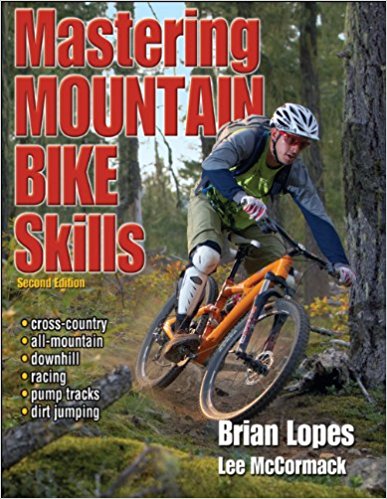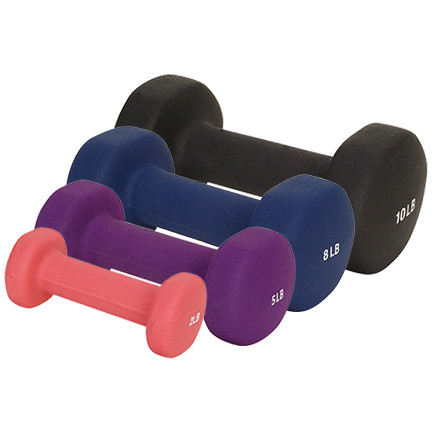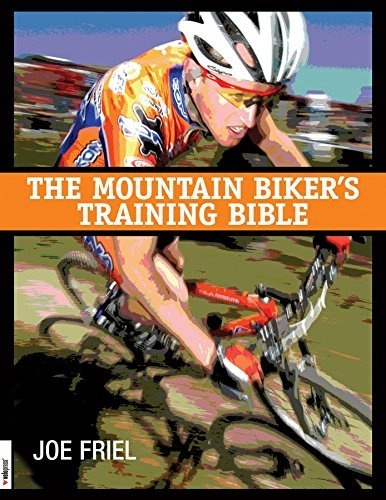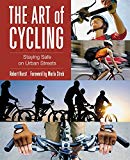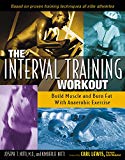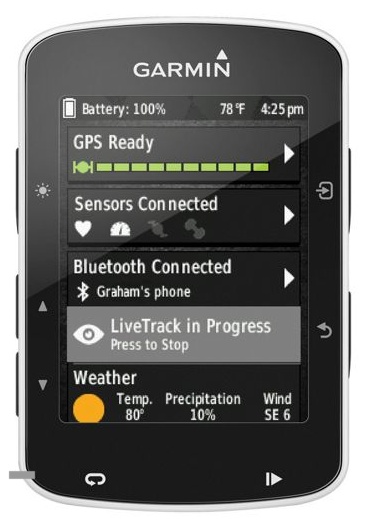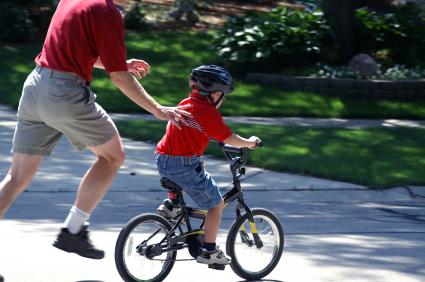
Bicycle training is a long term commitment. Like any other form of fitness training, it will take time to develop your skills and endurance capabilities.
Whether you wish to compete in a physical sport, train as a cyclist, or simply looking for a good workout, bike training is a good route to cardiovascular fitness.
Check Out These Training Equipment Items
 |
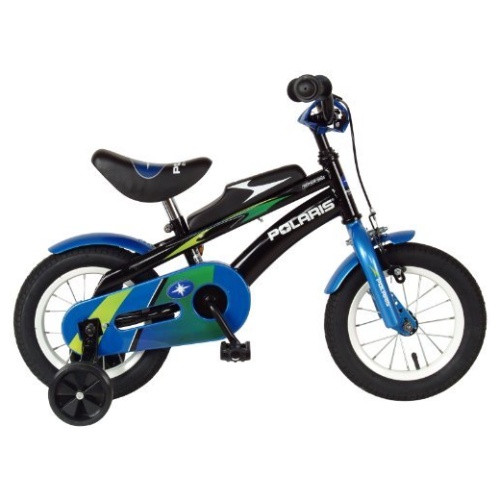 |
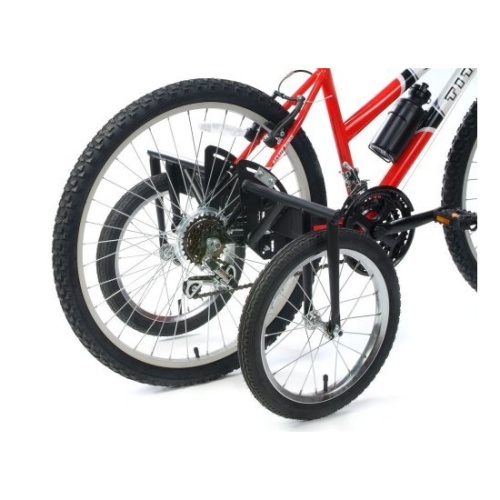 |
Check Out These Bicycle Training Topics
How To Ride a Bicycle – Once you have learned, you will never forget how to ride a bike, but you still do have to learn it to begin with.
Tip: Set out your bicycle training goals
Always set out your training goals before embarking on any cycling training program.
Even if you purchase the most expensive bicycle training equipment and read up on all the latest cycling workouts, you won’t see results if you don’t stay focused.
Set out your training goals at the beginning of your training program and record your progress each week.
Biking Exercise – Find time to read about biking exercise. Now that you’re comfortable riding around town, you’re looking to get to the next level of fitness. Cycling is a great way to develop overall fitness.
Cycling Training Program – A cycling training program should be a ‘must do’ on your list before even thinking of entering a bicycle event or competition.
Cycling Technique – If you’re serious about biking, you should consider evaluating your cycling technique. Many cyclers are making serious mistakes during riding or training, which can easily be fixed by a couple of tweaks here and there.
Cycling Workouts – Different bikes coupled with different environments- will it really matter or will it just be the same cycling workout?
Mountain Biking for Beginers – If you are new to mountain biking, this article about mountain biking for beginners is just for you. Don’t be afraid to give mountain biking a try!
Mountain Bike Training – Climb hills with ease when you follow these mountain bike training exercises.
Road Bike Training – Following a road bike training program should be a ‘must do’ if you wish to participate in a road racing bicycle competition.
Triathlon Bike Training – Triathlon bike training is a very specialized business. Follow these tips before your event.
Bike Training Camps – Many cyclists think that bike training camps are only for professional bikers. or for those who are planning to join national and international competitions. This is one myth that many bike training camp coaches have been trying to dispel for a long time.
Weight Training for Cyclists – Sports experts have long emphasized the importance of weight training for cyclists. Read more about how to combine weight lifting with you bicycle training routine.
Check Out These Bicycle Training Equipment
Adult Training Wheels – Adult training wheels are tools to assist adults in their quest to relearn (or learn) bicycle riding.
Bicycle Indoor Training Stands – Bicycle indoor training stands will help you train yourself- learn more about them.
Training Equipment – Using bicycle training equipment can determine the different between good cyclists and great cyclists.
Training Wheels – Training wheels are tools to assist both the child and adult in their quest to learn and relearn bicycle riding.
Rock and Roll Trainer – Even a Rock and Roll trainer can not mimic wind, noise or scenery that cyclists have while cycling outdoors, but it can simulate a more realistic bicycle motion while cycling.
Stationary Bicycle Stands – Stationary bicycle stands are designed to provide cyclists with a realistic cycling experience indoors. Read more about bicycle indoor training stands.
===============================================================================================================
===============================================================================================================
===============================================================================================================
Mountain Biking For Beginners
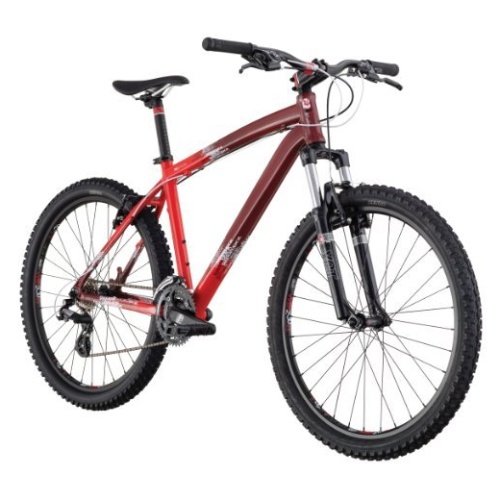
A Word about Mountain Biking
The popularity of extreme sports has taken the sporting world by storm. Mountain biking sport has become so popular because it can be done anywhere. Mountain bikes have a large range of function, and they can be used anywhere, from urban streets, to rugged mountain terrain. Mountain biking appeals to so many people because it can be done at any skill level, from leisurely riding the local trails to roughing it up in professional races and competitions.
Tip: Take time to master the fundamentals.
Too many beginners get overly excited about the prospect of transitioning from mountain biking to BMX competitions and extreme bicycle stunts. They fantasize about becoming a superstar, but never take the time to master fundamental cycling skills.
When it comes to mountain biking, there are three essential skills – cycling uphill, cycling downhill and turning around corners. Make sure you have fully mastered these skills before you move on to more complex stuff.
Buying the Right Bicycle
If you’re a beginning mountain biker, it’s important to start with the proper bicycle. First, you must determine your budget. Mountain bikes range in price from relatively inexpensive to virtually no price limit, so it’s important to determine a price range and only look at bikes within that range.
It is also important to determine what kind of riding style you’ll be doing. Terrain differs from smooth trail riding to extremely rough, gravity defying mountain terrain and everything in between, so pick a bike tailored to your specific riding style. There is also the matter of comfort versus efficiency. Bikes with full rear suspension are much more comfortable, but they are heavier and less efficient to pedal, so they would not be a great choice when learning mountain biking for beginners.
Finally, it is important to realize mountain bikes fluctuate drastically in price throughout the year, so look for mountain bikes during the off seasons of fall and winter and save yourself some serious money. I would recommend buying an entry level, hard tail mountain bike, such as these bicycles from eBay:
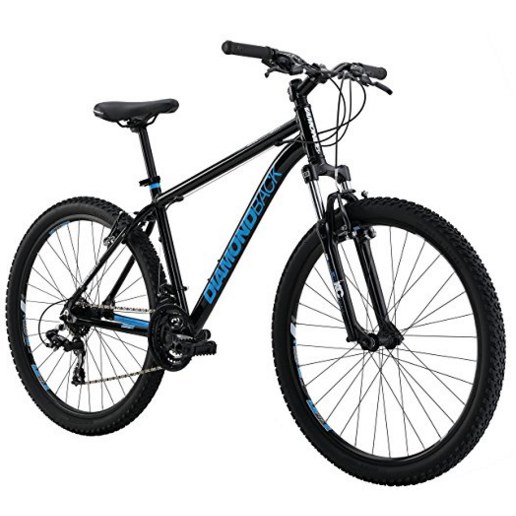 |
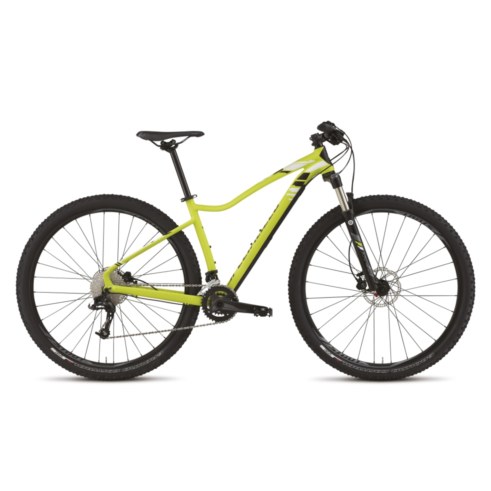 |
One important note about entry level mountain bike: Do not get a cheap bicycle, as your riding experience might be disappointing!
Cycling Equipment for Beginners
Beginning mountain bikers should also know they will be investing in other cycling equipment in addition to their bike. Safety equipment is essential for mountain biking for beginners, and it’s usually required. Besides a mountain bike, the most essential pieces of safety equipment are a properly fitted helmet and biking sunglasses to protect your eyes. Other basic equipment include a tire patch kit, spare tire tube, pocketknife, bicycle light, bicycle lock, water bottles, and snacks.
Take a look at these basic items:
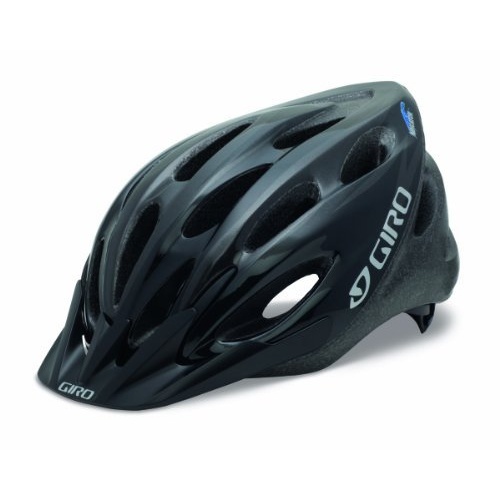 |
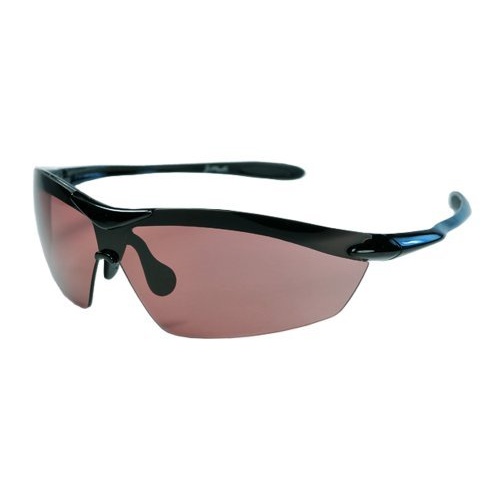 |
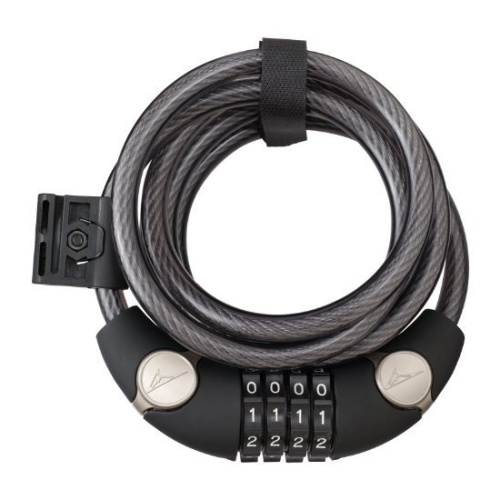 |
Click here to see many more cycling equipment.
Wearing the Right Gear
In addition to using the right cycling equipment, it is important to realize that wearing proper cycling clothes is not less important. This includes padded bicycling shorts, cycling underwear or cycling tights for the lower body. For the upper body, it is important to wear removable layers so you can adjust to higher and lower temperatures. Good choices for upper body layers include short sleeve bicycling jerseys or moisture-wicking long sleeve bicycling jerseys to protect the arms from scratches and sunburn. For the cold and rainy days you will need a waterproof winter riding gear. Finally, gear for beginning mountain bikers should include a warm hat, padded bicycling gloves, neck protection, moisture-wicking bicycling socks, and proper bike riding shoes.
Take a look at these cycling clothes:
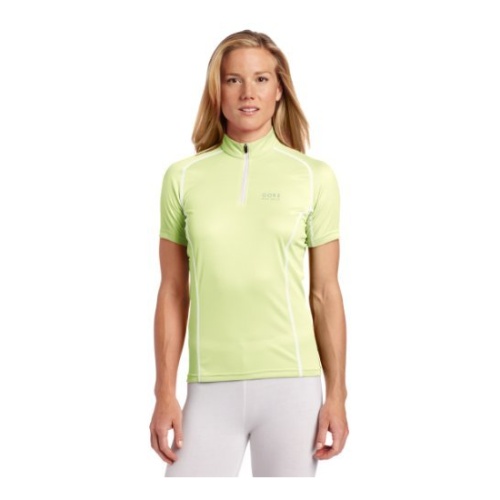 |
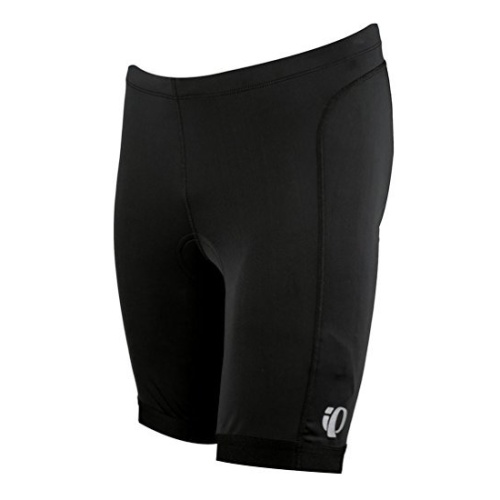 |
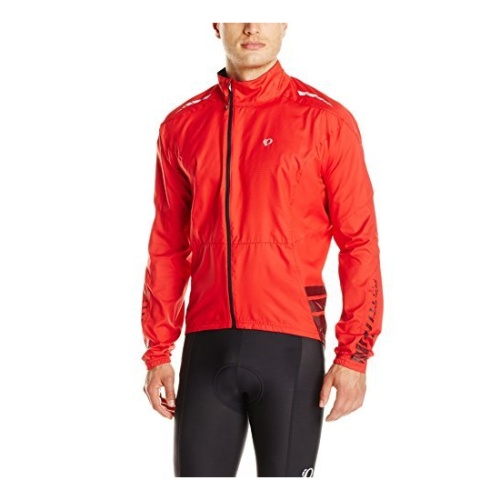 |
Click here to see many more cycling clothes.
Riding Techniques
Mountain biking for beginners is a challenge, and it is important to know a few facts before you begin. It is important to learn to shift gears appropriately. This takes some practice, but becomes easier with experience.
As you learn to ride different terrain, play around with your bike seat and adjust the height to determine what works best for you. In addition, go easy on the handlebar grips. Beginners tend to squeeze the grips too hard, leading to hand, arm, and shoulder discomfort. Finally, as a beginner, remember to take it slow. Never exceed speeds at which you feel in control and feel comfortable. This will keep you safe, give you opportunities to learn, and before you know it, you’ll be an expert mountain biker.
Click here to read more cycling techniques.
Last Word About Mountain Biking For Beginners
If mountain biking is a sport with which you’re interested in investing, talk to local bike shops and experts, study your area’s local maps and trails, and don’t be afraid to get out there and give mountain biking a try!

Bill Cosby

===============================================================================================================
===============================================================================================================
===============================================================================================================
Mountain Bike Training Program
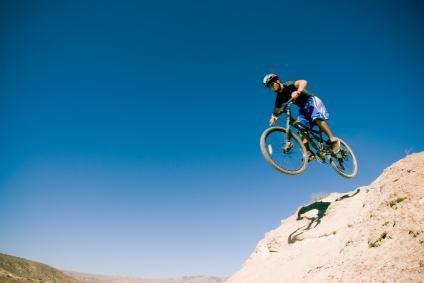
Mountain bike training must be adapted to your everyday environment. If you’re lucky enough to be a countryside dweller, it’s easy to find the right places to train. For the rest of us, it’s important to get inventive with our mountain biking workouts.
Follow these mountain biking sport tips to get yourself in shape for the hills.
Hill Mountain Bike Training Program
You absolutely cannot train effectively for mountain biking without hitting the hills. Spend a morning riding around your town or city. Pay attention to the hilly routes. You’re looking for the ideal combination of occasional climbs, followed by flat or downhill rest stretches. (For those of you living in San Francisco, good luck!)
Tip: Throw some weight training into your training program.
While cycling is obviously the most vital component of your training program, some weight training can help to round out your workout and develop the muscular strength needed to conquer steep hills and hit breathtaking speeds.
Recommended exercises for mountain bikers include squats, leg presses and lunges as these target the muscles and joints most commonly used by cyclists.
You can vary the way you approach your hills. Combine gentle climbs, “spinning” the wheels in low gears, with hill attacks, where you aim to power your way to the top in the shortest time possible. Keep records of your attacks, and try to beat the time on your next ride. (See Sprint Work, below.)
Spinning your way slowly up the hill is an important skill. Mountain bike training is about more than just fitness; gauging your energy levels and pacing yourself is vital on longer rides, and experience of slow, less draining hill climbs will stand you in good stead on your next bike tour.
New to the area? Consider mapping out the best route on an old street map, until you have learned the route perfectly.
Sprint Mountain Bike Training Program
Again, hills are important to sprint work. While you can sprint on the flat, your heart rate will climb faster if you’re climbing, too!
The ideal hill sprint is 30 to 60 seconds. More than that is likely to exhaust you, while less will not spike your fitness up as quickly. Combine your sprints with rest periods, but don’t stop riding, just take it easier. (This is why it’s important to know how to “spin” your way up a hill.)
Peak 8 training is huge in the world of sport at the moment. Set up a peak bicycle sprint routine, where you max out your sprinting speed for 30 seconds, separated by two minutes of easy riding, eight times during your interval training session. If the incline varies, aim to use the gears to help you maintain the same amount of effort, down or uphill.
Endurance Mountain Bike Training Program
Training for endurance is not really essential, unless you’re training for a long bike tour. In that case, it’s useful to know that you have the ability to ride for hours every day.
Sprint training (see above) will also improve your strength and endurance, but consider including one or two long rides per week for 12 weeks before your tour. A long ride would be at least four hours with one break.
As the tour gets closer, you’ll need to increase your long rides to two per week. Two weeks before the tour, if possible, complete three long rides; then take a week off before the tour begins.
Read more about mountain bikes.
Books about Mountain Bike Training on eBay

Amy Webster

===============================================================================================================
===============================================================================================================
===============================================================================================================
Long Distance Biking
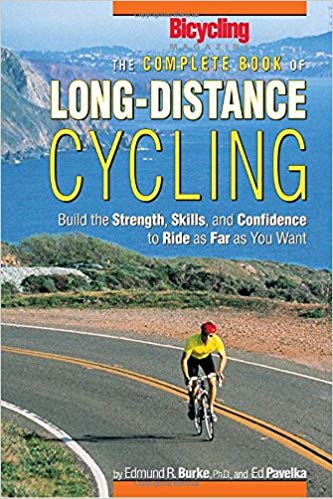 |
 |
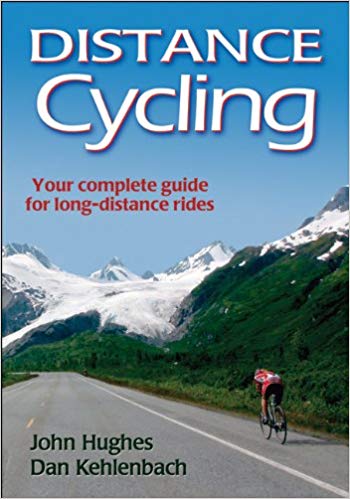 |
Books about Long Distance Cycling
If you have been riding your bike around town regularly, perhaps it is time to start considering long distance biking. Long distance riding is about more than just pushing your body to go even further; it can also be an incredible life experience.
These long biking journeys are growing in popularity because they provide people with a fun, affordable, and environmentally friendly way to see scenic sights and go on an adventure. You can plan a cycling trip that will allow you to explore a nearby area, or you can even plan a biking vacation that will take you to more exotic locales. Whichever you choose, you will be increasing your fitness while having a great time.
Starting Your Long Distance Biking Training
Of course, long distance rides have different requirements than your short rides about town. You have to have the endurance, strength, and equipment necessary to make it from point A to point B successfully. Below are a few steps you can take when preparing for long distance biking.
Strengthening Your Core
Many people would think that you need to focus on the legs to prepare for a long bike ride, but your core is just as important. As you ride for longer periods of time, you might find yourself slouching over the handlebars. This can lead to back problems and injuries within your core. You can reduce these risks by doing exercises that require you to tense your core muscles for repetitions that last at least 15 seconds.
 |
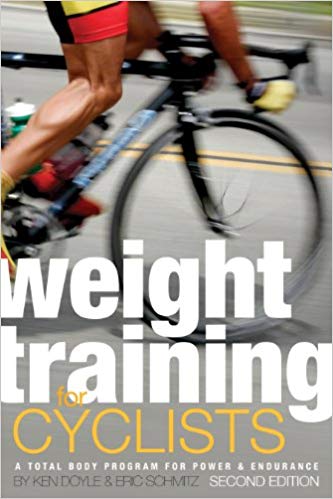 |
 |
Low-Weight, High-Repetition Resistance Training
When working on strength, you may feel impatient and think that you need to try to lift the heaviest amount possible. To prepare for long distance bike rides, you are much better off opting for lighter weights and doing high-repetition sets. By doing about 40 repetitions with light weights instead of 15 repetitions with heavy weights, you can build strength and endurance, which are each important for long distance biking.
.
High Intensity Interval Training
If you are preparing for a long distance competition, and you would like to increase your times, interval training is a smart way to go. Being able to pedal at your max speeds for short bursts of time can mean being able to easily pass other riders when it matters most. When training, a great way to prepare is to ride at an even, comfortable pace for at least an hour a day, attempting sprints at top speeds every ten minutes during these practice sessions.
Don’t Forget Your Equipment
Preparing for a long distance ride is not just about training your body. You also need to have the right gear. Depending upon the length of your trip, the following items may be very useful:
- Repair Tools – A good kit will contain spare inner tubes, a pump, a pair of pliers, tire levers, and a wrench, among other tools.
- Bags – Store items like water bottles, snacks, and extra clothes in a bicycle pannier and/or backpack.
- Overnight Items – If your long distance biking trip is going to last multiple days, you might need a tent, cooking equipment, and other overnight gear.
- Rear Rack – If you do have a lot of items to store, such as a week’s worth of clothing and toiletries, a rear bicycle rack can help you accommodate all of your supplies.
In Short: Take Your Time Before Hitting the Road
The key to a successful long distance trek is being aware of what you are getting into and being prepared. Take plenty of time to plan and prepare for your trip, train your body, acquire all of the necessary supplies, and follow these helpful tips in order to improve your experience.
===============================================================================================================
===============================================================================================================
===============================================================================================================
Cycling Workouts – The Difference Between Gym Cycling, Mountain Biking and Road Bicycling Workouts
 |
 |
“Condition your body and increase the resistance,” says my coach. “We will finish this bicycle marathon,” says my brother. “Enjoy the sights because after this ride, I am pretty sure you will be sore all over,” says my dad. These are the three of the most powerful men I know, all giving me a very draining but satisfying cycling workout.
I tell them that I am already tired from going back and forth to my day job whilst commuting by bicycle, but they say that commuting is different from really exercising. I then ask myself, “What the heck is the difference between cycling at a gym, getting on a road bike, and trail riding with a mountain bike?”
I have been riding my bike for as long as I can remember, and I have visited a lot of online forums that have helped me understand these cycling workouts. Turns out – there really are many differences. I cannot really specify how many calories each aspect of these workouts can burn, but I can tell the differences that really matter.
I mean, yes, calories do matter for those who want to burn off that excess fat (read here about a bicycling for weight loss), but for bike-riding enthusiasts like me, other things are important as well. Burning off the excess fat is like the icing on the cake. It all boils down to the flavor of the cake. So, what did I really learn from all those bike-riding forums and the Internet in general?
Gym Cycling Workouts
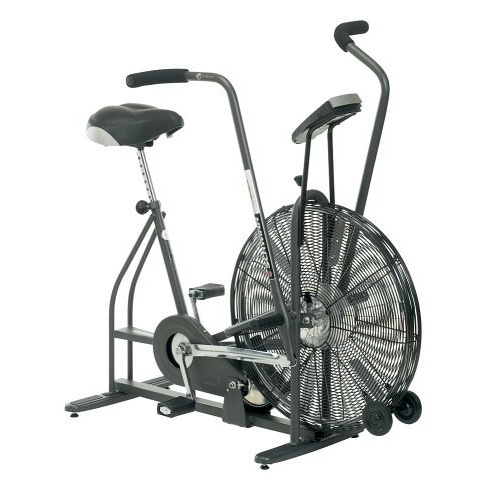 |
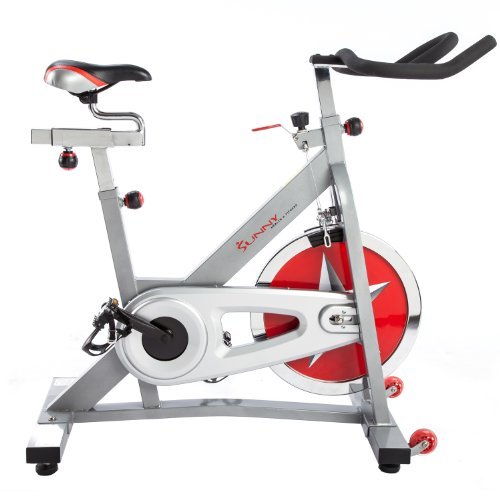 |
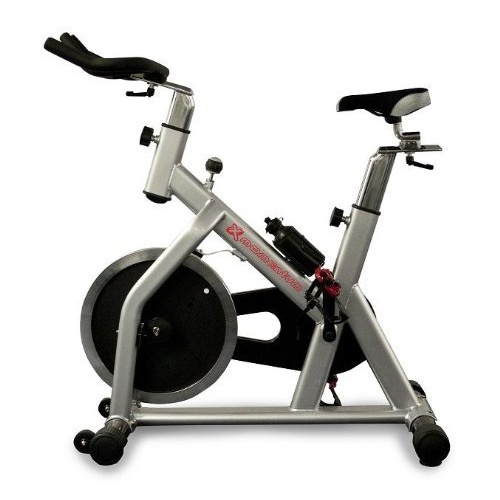 |
A cycling workout in a gym differs in a bunch of ways from cycling with road racing bicycles and mountain bikes. First of all, stationary bikes are used in gyms. These stationary bikes often have resistance pads that you can increase if you want to get a very good aerobic workout. Yes, you sweat just as with any other workout in or out of the gym.
There is no danger because you are in a controlled environment. You can even close your eyes while riding your stationary bike. This means that control over the bike and your alertness is not really warranted. You can even take your hands off the handle bars. The only downside is that it does not mimic real-life bicycling outdoors.
Note: If you wish to exercise at home, while riding your own bicycles, you can use a bicycle indoor training stand. Read more.
Did you know…?
Did you know that weightlifting can be very beneficial for cyclists too?
Cycling may be a primarily cardiovascular exercise, but good cyclists have powerful muscles as well. Doing weightlifting exercises like squats, deadlifts and lunges will help build up those leg muscles, giving you the strength you need for more powerful and efficient pedaling.
Road Bicycling Workouts
A cycling workout on the road has its advantages and disadvantages. First the advantages – since the road is mostly made of flat ground that sometimes has inclines and declines, leg endurance is worked on.
This means that a person spending time on a road bike will likely have more endurance than a person on a mountain bike.
The difference between road biking and gym cycling is the real-world experience, because factors that act as both advantages and disadvantages are only seen on the road. These factors include traffic. This is a disadvantage because it increases the danger that comes with road biking, but an advantage because it trains the mind and the body of the biker to be ever vigilant when cycling on the road.
Mountain Bicycling Workouts
On online forums, mountain bikers always seem to mention that whole-body strength is needed for mountain bikers. This is because the trails are highly varied. They may suddenly incline, then decline, then may swerve to the right or left.
There are times when the trails are soft and muddy, and there are times when the trails are hard and rough. And since mountain bikes have a different angular design from road bikes, stress on the upper body is also felt when riding mountain bikes. Therefor, mountain bikes train the biker’s strength rather than his endurance.
Conclusion
- Gym Cycling – Aerobic Exercise
- Road Biking – Endurance Exercise
- Mountain Biking – Strength Exercise
Know what you want to strengthen and work on that. If you want to be well rounded and physically fit, then have a bit of every type of cycling workout.
Books About Cycling Workouts
More information about cycling workouts can be found on several informative books. Take a look at these selected books
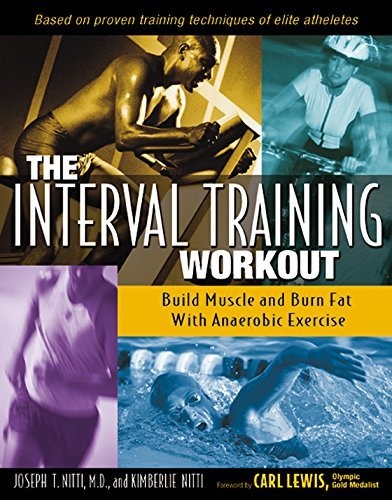 |
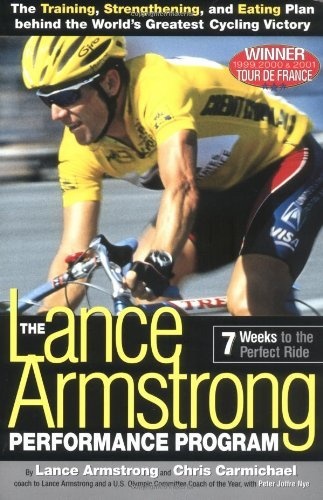 |
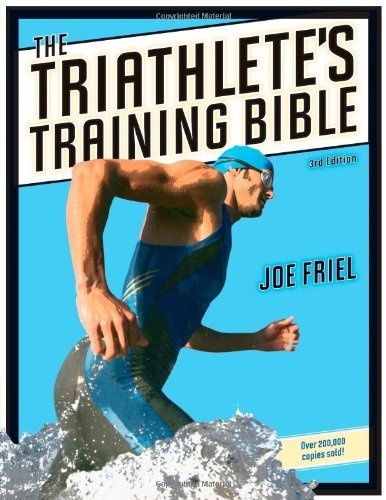 |

is similar to the sound of a gun being cocked.”.
Amy Webster

===============================================================================================================
===============================================================================================================
===============================================================================================================
Cycling Technique
If you’re serious about biking, you should consider evaluating your cycling technique. Many cyclers are making serious mistakes during riding or training, which can easily be fixed by a couple of tweaks here and there. If you’re using the proper technique, you’ll get the best performance and most fun out of all of your cycling. When evaluating your performance and technique, consider reviewing the following:
Did you know…?
Did you know that its best to practice cycling technique on real bicycles, not stationary bikes.
Outdoor cycling can be a pain in the neck when the weather is gloomy and the temperature plummets. However, simply put, stationary bicycles can never hone your cycling technique in the same way regular bicycles can.
You need to learn to deal with the natural sway of the bicycle, undulating landscapes and other factors that will affect your technique. Thus, try to cycle outdoors as much as possible.
Cycling Techniques for Peak Performance
Peak cycling performance depends heavily on proper technique.
- Start slow – Whether you’re cycling for competition, exercise, strength, endurance, or just for fun, we all want to be as efficient as possible. If your heart rate is too high during the first 30 minutes of your cycling, your metabolic rate begins to burn sugar instead of fat. Since sugar burns in half the amount of time, you’re going to run out of energy reserves too quickly. Start slow, only increasing intensity after the first 30 minutes, and you’ll train your body to use fat reserves instead of burning sugar, and we all want to burn extra fat right?
- Climb some hills – If you want to truly improve, it’s important to incorporate hills into your regular routine. Make sure to do a few easier, lower-gradient hills, and at least one really hard hill per workout. Before you know it, you’ll be seeking out the hills instead of avoiding them.
- Total body training – Cycling a lot of miles will definitely improve your cycling technique, but you can’t ignore the rest of your body and overall fitness. Cycling does not give your upper body muscles the workout they need, so it’s important to supplement your riding with upper body workouts and core stability training.
- Proper Fueling – Before racing or competing, only eat food you are familiar with, and don’t introduce anything new to your body. This could lead to upper GI irritation. Also make sure you properly fuel your body before a big event, and eat and drink often while riding. Eat more solid foods at the beginning of a race, and save bars and gels for later. Also, drink extremely often. It’s very difficult to drink too much while cycling.
For more information you are invited to read the article about cycling nutrition.
The Right Posture
Proper cycling technique depends heavily on proper posture.
- Pedal – You should pedal with flat feet. Avoid lifting your heels or toes toward the sky. Also, start pushing forward on the pedals before you reach to top of the pedaling arc to get more power.
- Hands – If you ride with your hands on top of the handlebars on the flat portion, always wrap your thumbs all the way around the bar. Far too many riders slip off their bars and risk injury.
Also, change your hand position on the bars every few minutes. This allows your muscles to adapt for times when you need the necessary power when riding through a head wind or climbing.
- Head – Keep your head up and relax your shoulders and elbows. If your head is lifted too high, unnecessary tension will be in your hands, neck, arms, and shoulders. If you lift your head just high enough to have relaxed shoulders and elbows, this tension will be released and you’ll have a more natural technique.
You are invited to read this article about neck muscle pain.
Use Your Bicycle Correctly
Proper cycling technique also relies heavily on the proper bicycle and the proper use of your bicycle.
- Seat Position – Make sure your seat is flat or slightly pointed upward to prevent you from sliding forward, and to give you the proper support you need while cycling. Having your seat in the proper position will relieve a lot of undue stress in the shoulders, neck, and lower back.
Read the article about bicycling and pain.
- Switching Gears – Know when it’s time to switch gears. You should always be pedaling at a rate of 90 -100 rpm to be the most efficient cycler. If you’re any lower than that, you’re in too high of a gear. If you’re faster than that, you’re in too low of a gear. Also, it’s important to let off of your pedals a little bit when switching gears.
Final Word on Cycling Technique
Don’t become overwhelmed with all of the techniques listed. Many of them come naturally to most riders, and those that don’t come naturally to you are the ones you can concentrate on working. With a few tweaks and concentrated practice, you’ll soon see a major improvement in your bicycling technique.
===============================================================================================================
===============================================================================================================
===============================================================================================================
Bicycle Exercise
All About Bicycling as Exercise
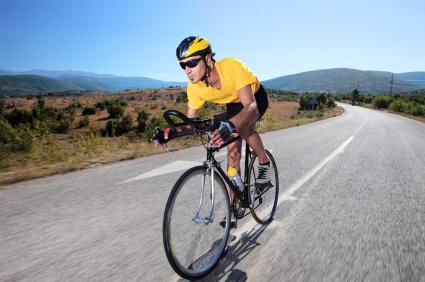
As you know, the bicycle is very versatile. Not only can you ride to the corner store to get milk, but you can also ride over 3,000 kilometers to win a prestigious race like the Tour de France!
Okay, so you’re not quite ready for the Tour, but you are looking to develop a more systematic approach to cycling in order to increase your fitness.
Did you know…?
Did you know that interval training can help you burn more calories in less time?
Recent scientific studies have shown that interval training, where you pedal as fast and as hard as you can for a short period of time, rest for a short while and then repeat the process, is highly effective at burning calories because it drastically elevates your metabolism. Include some interval training in your cycling workouts to shrink that waistline.
Here is what you need to know about bicycle exercise.
Basic Fitness and bicycle Exercise Principles
Like any other sport, there are some important things you need to remember – not only to prevent injury, but also to get the most out of your efforts:
- Stretch after any prolonged exercise.
- Make sure to include a proper warm-up and cool-down phase to your workout.
- Eat properly to fuel your body.
- Never underestimate the importance of a good night’s rest – a rested body is at its fullest potential!
- If you are exercising for longer than 60 minutes, make sure to bring food and/or a sports drink.
Why Warm Up Before Your Bicycle Exercise?
Many people skip the warm-up and cool-down phase of their workouts. This is a big mistake, and these people risk injury. But there’s more: cycling is about more than getting blood to the muscles you plan on using and “pre-lubricating” your joints by getting the synovial fluids flowing.
The warm-up is your chance to mentally prepare yourself for what you are about to do. A warm-up is simple – nothing more than 5-10 minutes of cycling at a very easy tempo.
And a Cool-Down Too?
Yes! The cool-down phase to cycling is very important – especially so for very hard workouts. After a sustained period of exertion, coming to a sudden stop may cause dizziness. You really don’t want to be getting dizzy when you’re on your bike!
Just like a warm-up, a cool-down is 5-10 minutes at a very easy tempo. This allows your blood flow to recalibrate itself, and your heartbeat to slowly come back to normal.
Different Bicycle Exercise for Different Results
Depending upon your goals, try to fit in a cycling workout 3-5 times a week.
If you are training for a particular event, cater your training to this event. However, if you are just looking to increase your fitness in the off season, focus on accumulating kilometers through longer, slower rides.
Long Slow Distance: a longer ride (1-3 hours) at a slower tempo. This is essential for acclimatizing your body to the endurance aspect of the sport of cycling. Incorporate at least one long slow ride into your schedule every week.
Tempo or Interval Training: These rides usually last 1-2 hours. Although the pace is slower overall, work in periods of 30-60 seconds where you increase the tempo to a more difficult level. This accustoms your legs to pedaling at a fast tempo.
Hill Training: Hill training is a good way to mix up your training, but does not interest everyone! It is more difficult, and the benefits may not seem readily apparent unless you plan on cycling in a hilly or mountainous region. Nonetheless, it is a challenging way to increase your fitness and proficiency with climbing!
Sprinting: People underestimate how fast you can go on a bike – but you don’t get fast by riding slow! On your next ride, practice a few intervals where, for 10-20 seconds, you sprint as hard as you can. This is great training for racing, but also helps your body get used to the muscular burning of lactic acid, a by-product of muscular effort.
Useful Training Aids for Bicycle Exercise
Bike riding for exercise is a great way to get fit. Training with others will help you improve, but sometimes it may be hard to find time to meet with a training partner. In these instances, you may want to consider training with a cycling computer or heart rate monitor.
A great aid for bicycling as exercise is a cycling power meter. Get here all the details.
More books about bicycle exercise
 |
 |

Amy Webster



